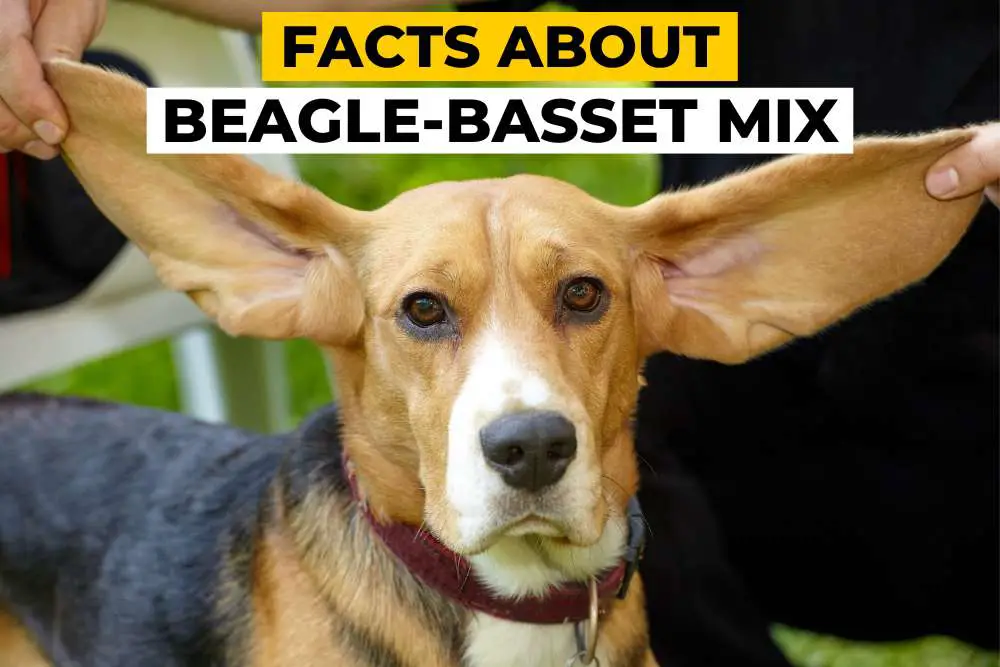Beagle and Basset Hound Mix or Bagle Hound are quite the characters, with their powerful noses and their perky personalities.
In today’s article, we will look into 10 facts about Beagle Basset Hound Mix.
1. Bagle Hounds’ legs are more proportionate than the parent breeds
Beagles have long legs on their thin frames, while Basset hounds tend to be lower to the ground. When you mix the two, however, you will get a Bagle that has something in between – more proportionate legs!
It’s easy to miss when you aren’t looking for it, but the next time you’re at the dog park, look for any Beagles or Basset hounds, and if you see one, then you’ll notice the leg difference right away. It’s just another neat trait that the Bagle breed brings to the table.
2. Both parent breeds have a long history.
Basset hounds were originally bred in the 1500s in France for tracking rabbits. Even the name Basset has an indicator if you know the language. The word ‘Bas’ in French means ‘low’ and is believed to describe the short legs and low stance of the Basset Breed.
On the other hand, Beagles didn’t come into their current incarnation until quite a bit later. While one of their ancestors, the Talbot hound, was around in the 8th century, the first Beagle ‘standard’ would not come until much later with the formation of the ‘Beagle Club’ in 1890.
Their goal was to produce one standard Beagle, the kind that we know and love today, starting with 17 packs of Beagles, and by 1902, they’d raised the number to 44. Like Basset hounds, they were bred to track rabbits and other small game, a task to which they definitely excelled!
While we aren’t sure when the first Bagle was bred, both parents definitely have a long and rich history!
3. They have Super-Sniffer noses.
Regarding scent-tracking prey, Bagles are well-equipped from both sides of their family. If you were rating a top 10 sniffing dogs, number 1 would be the Bloodhound, but numbers 2 and 3 are the Basset hound and the Beagle!
To give you an idea of how powerful their noses are, we can compare the Basset hound’s olfactory senses to our human ones. Humans have around 5 – 6 million receptors for scent in their noses, to a Basset Hound whopping 220 million.
Now you know why your Bagle sniffs all of the time! With super sniffing powers from both sides of the family, the world is pretty amazing from their nosey point of view!
4. They’re extremely cheery and playful.
Bagles are incredibly bouncy and cheery when it comes to spending time with their owners. These dogs absolutely lose their minds when you get home, and if you wanna play outside, they are always up for it.
That’s because they have picked up the easy-going nature of the Basset hound, along with the boundless enthusiasm of a Beagle.
They’re quite the little characters, indeed!
5. They don’t do well alone.
Bagles may not be a good fit if you can’t spend a lot of time with them. While all dogs are very social and have a pack mentality, you must remember that both Basset hounds and Beagles were originally bred as hunting dogs.
They would be taken out in large packs to help track and then to corner prey, so too much time alone can quickly lead to depression, acting out, or full-blown separation anxiety.
That said, if you have free time to spend with your furry friend, you’ll have a dog that is always happiest by your side, and there’s no feeling quite like it!
6. They are Low Maintainence.
The good news on the grooming side is that Bagles have very short hair, so you won’t need to visit the groomers much. Unless your Bagle likes to get really dirty outside, a bath every 3 to 4 weeks should be fine.
You’ll also want to brush them once a week to catch stray, shed hairs to keep them off the couch and your floor. Easy-peasy!
7. They are quite energetic
As the parent breeds of the Bagle are both hunting dogs, your dog will need a good amount of exercise to stay happy and healthy. You’ll want to commit to a minimum of 1 hour a day of exercise. You can divide this up in the daily walks, and playtime in the backyard will be well-received.
Without enough exercise, your dog might get bored and either sleep too much (putting them at risk for obesity) or could start getting into mischief. This is why you must not skip their exercise time. Your Bagle needs it!
8. You’ll need a backyard.
Speaking of exercise time, this breed also needs a lot of space – they’re really not a good fit for apartment life. Ideally, you should have a house with a backyard so that your dog has plenty of space to run around in, play, and sniff around in search of adventure.
If you already have a Bagle and live in an apartment, then trips to the local dog park are a great way to ensure that they get plenty of space and exercise. Even so, if you can get a place with a backyard, this will be for the best!
9. They can be a bit on the stubborn side.
Those super noses can translate into super-stubbornness from your Bagle when they just won’t leave a particular scent alone. This can take some getting used to, but a protip that’s easy to do is to simply carry treats with you.
They’ll come in handy when you find yourself in a hurry and need something to distract your dog from an interesting scent that’s captured their attention.
10. Regular vet visits are a good idea.
Beagles and Basset Hounds, like any mixed breed, are prone to certain health conditions, so it’s a good idea to make sure that you visit the vet a minimum of twice a year. Common health conditions for this breed include the following:
- Hip dysplasia
- Ear infection
- Eye conditions such as glaucoma and cataracts
- Epilepsy
- Weight gain (these dogs LOVE to eat)
Don’t worry – every breed has certain health conditions that they are more at risk for than other breeds. With regular vet visits, you’ll be able to keep good track of your dog’s health so that if any arise, you’ll be prepared to give them the best care available.
Also Read: What do Basset Hounds usually Die From?.
Some final words on Bagle Hounds
As you can see, Bagle Hounds bring many perks and personalities. While they need a lot of exercise and space, their super-sniffing dogs are loyal and loving, and once you’ve brought one home, you might never want another breed.

